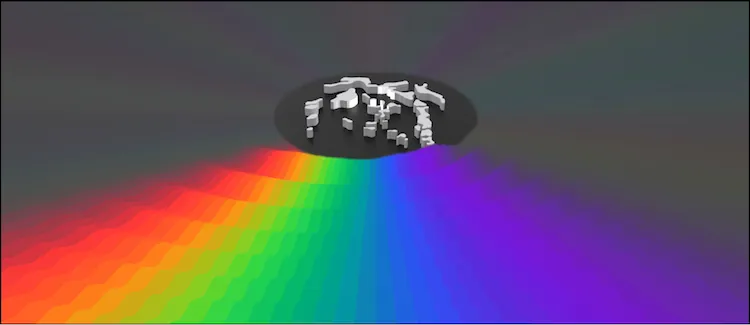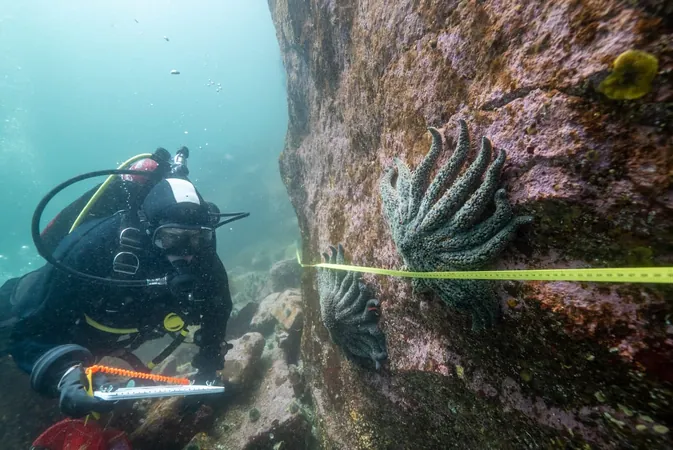
Unleashing the Sound Spectrum: Denmark's Acoustic Rainbow Breakthrough!
2025-07-11
Author: Arjun
Researchers Create Acoustic Rainbow in Groundbreaking Discovery
In an extraordinary breakthrough, researchers from Denmark's Danmarks Tekniske Universitet (DTU) have achieved what many believed was impossible: the creation of an acoustic rainbow! This novel structure spatially decomposes sound into its individual frequencies, much like how light is split into colors, paving the way for revolutionary advances in sound technology.
The Science Behind Acoustic Rainbows
Acoustic rainbows, though less familiar than their optical counterparts, operate on a similar principle. While light disperses through prisms, sound waves oscillating at different frequencies can bend and migrate in various directions when subjected to an innovative design. Previous attempts to produce such effects were confined to mediums using arrays of resonant structures, but the DTU team broke new ground with their sophisticated structural design.
Nature as Inspiration: Mimicking Biological Design
Nature has long been a source of inspiration, with mammals like bats and human beings using complex outer ear geometries to locate sounds. By imitating these intricate biological structures, researchers have historically aimed to create designs that mimic nature's efficiency. However, most past efforts have fallen flat—until now.
A Revolutionary Technique: Computational Morphogenesis
Co-led by visionaries Rasmus Ellebæk Christiansen and Efren Fernandez-Grande, this team achieved their auditory feat using a cutting-edge technique called computational morphogenesis, or topology optimization. By employing a sophisticated iterative process, they skillfully redistributed sound-reflecting materials within a specified area, allowing them to engineer a targeted sound field that effectively mimicked naturally occurring structures.
Powerful Tools for a New Era in Design
Thanks to advances in computational power and the advent of 3D printing, the researchers unlocked 'nearly unlimited design freedom.' Ellebæk Christiansen highlights their meticulous approach, transforming design challenges into mathematical optimization problems, steering clear of traditional design clichés to explore radically innovative geometries.
Imagining the Future: Tailored Acoustic Structures
The metamaterial designed by the DTU team not only mirrors topological features seen in nature but also opens doors to completely new acoustic geometries. Imagine acoustic materials that could scatter high frequencies while absorbing lower ones, or sound lenses that strategically direct sound waves for optimal auditory experiences.
What's Next for Acoustic Innovation?
The researchers have their sights set on progressing from two-dimensional designs to fully three-dimensional structures, promising even more intricate acoustic field control. As Ellebæk Christiansen points out, this leap would allow for unprecedented complexity in sound manipulation, creating a tantalizing vision for the future of acoustic technology.
Join the Acoustic Revolution!
With this groundbreaking discovery, the realm of sound is set for a transformation, reshaping our auditory experiences and expanding possibilities across various applications. Stay tuned—this is just the beginning of a new era for acoustic science!


 Brasil (PT)
Brasil (PT)
 Canada (EN)
Canada (EN)
 Chile (ES)
Chile (ES)
 Česko (CS)
Česko (CS)
 대한민국 (KO)
대한민국 (KO)
 España (ES)
España (ES)
 France (FR)
France (FR)
 Hong Kong (EN)
Hong Kong (EN)
 Italia (IT)
Italia (IT)
 日本 (JA)
日本 (JA)
 Magyarország (HU)
Magyarország (HU)
 Norge (NO)
Norge (NO)
 Polska (PL)
Polska (PL)
 Schweiz (DE)
Schweiz (DE)
 Singapore (EN)
Singapore (EN)
 Sverige (SV)
Sverige (SV)
 Suomi (FI)
Suomi (FI)
 Türkiye (TR)
Türkiye (TR)
 الإمارات العربية المتحدة (AR)
الإمارات العربية المتحدة (AR)